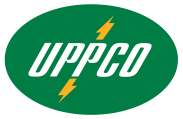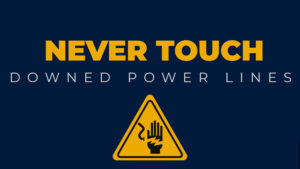
Frequently Asked Questions
If your question is not answered here, or if you’d like more information, please contact us at (906)449-2013
I’m not having any power reliability issues. Why do you have to trim my trees?
It’s in everyone’s best interest to keep trees trimmed. Safe and reliable electric service is threatened in part by trees growing into electric lines. When electric lines come in contact with trees, problems can occur, such as power outages, fire hazards and safety hazards.
Will I have to pay for this trimming?
No.
How much are you going to take off?
The amount of tree pruning needed depends on the type and location of the tree. All trees are pruned back to existing tree lines.
If no tree line exists (yards, parks, etc.) then the trees are sorted into one of two categories: slow growing and fast growing.
Trees species that re-grow their branches at a slow rate are pruned in order to provide a clearance of at least 6 feet from conductors. Examples of “slow growing” species include members of the conifer family and many fruit-bearing trees.
Tree species that re-grow their branches at faster rates are pruned to give a minimum clearance of 10 feet from conductors. Common “fast growing” trees are ash, aspen, basswood, birch, elm, maple, oak, willow and white pine.
All limbs that overhang our conductors are pruned in order to provide 20 feet of clearance.
What about the trees near the power line that comes to my house on my property?
Coated secondary wires and service wires are cleared only if trees or limbs are laying on or pulling down the wires.
What happens to the branches you trim off?
In rural areas, limbs and brush smaller than 4 inches in diameter are piled and left on site. In urban areas, the limbs are chipped and hauled away. Wood larger than 4 inches in diameter is left on site in both urban and rural areas. We will work with the customer as to the placement of the wood left behind.
Do you clean up everything once you are done?
In rural areas, limbs and brush smaller than 4 inches in diameter are piled and left on site. In urban areas, the limbs are chipped and hauled away. Wood larger than 4 inches in diameter is left on site at firewood length at the base of the tree in both urban and rural areas.
Are you going to drive over my lawn?
The contractors use best practices to minimize damage to property. If damage is caused by the contractor, the contractor will pay for the cost to return your property to its original condition.
How much of a notice will you give me before you come out to trim?
You will receive a letter well in advance informing you that crews will be trimming trees in your area.
The Contractor will make a reasonable attempt to contact the landowner a minimum of 24 hours before working on their property. This contact may be in the form of a written notice delivered to the landowner’s residence, a telephone call or an in-person contact.
The Contractor will also make a reasonable effort to accommodate a landowner’s desire to be present when work is done on his or her property. Emergency repairs do not need to meet the notification requirement.
Who do I call if I have questions?
Call UPPCO at (800) 562-7680 / (906) 449-2013. A representative will direct you to the right person to answer your question.
Can I do any plantings to hide that green box in the back yard?
Underground electric lines, though unseen, require space of their own. Planting shrubs and trees over underground lines is not recommended because of future maintenance that will be needed on these lines.
An 8-foot-wide strip centered directly over an underground line will provide enough space for future maintenance. Transformers located on the ground (which convert high electric voltage to a voltage usable by your household) also require extra space for maintenance. Leave an area of 8 feet in the front (the side marked with the DANGER HIGH VOLTAGE sign) to be free of vines, shrubs and trees.
View our Vegetation Management page for information on the best trees to plant for the space and conditions you are working with.


